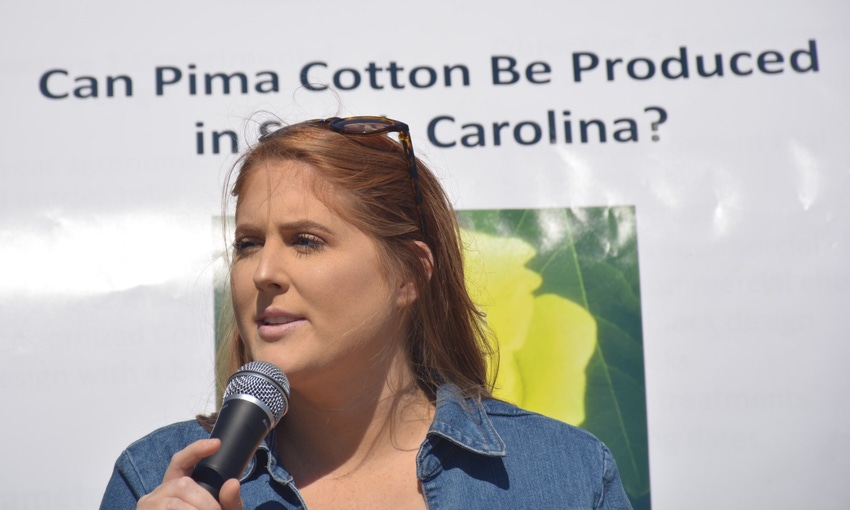
Up until the 1920s, the low country of South Carolina was well known for producing Sea Island cotton that was prized for its extra-long fiber and silkiness. But thanks to devastation from the boll weevil, Sea Island cotton totally disappeared from production in South Carolina and Georgia in the 1920s.
And now, nearly 100 years later, there is hope that extra-long staple cotton can once again be grown in the Palmetto State. In fact, research conducted by Clemson University at the Pee Dee Research and Extension Center in Darlington is asking the question, “Can pima be grown in South Carolina?”
Pima enjoys a market premium over upland cotton, often going for twice the price.
“In the early 1920s, South Carolina growers switched to only upland cotton to escape the drastic yield losses to Sea Island cotton brought on by the boll weevil,” explains Sarah Holladay, a Clemson University graduate student who is working with Clemson cotton specialist Dr. Mike Jones on the pima research project at the Pee Dee Center.
Now that the boll weevil has been eradicated, Holladay hypothesizes that pima can be commercially grown in South Carolina, but more research is needed before official recommendations on pima production can be made by Clemson.
This is the second year of the research project that began in 2018. At the Pee Dee field day Aug. 29, Holladay shared results of her 2018 research.
Holladay says there are two objectives to the research:
Identify pima accessions with acceptable adaptations, agronomic performance and fiber quality when managed for earliness.
Determine whether pima would need irrigation. The research has both irrigated and dryland components and three planting dates.
The test plot at the Pee Dee Center consists of 44 pima accessions, four commercial pima checks and two upland checks for a total of 50 cotton varieties planted. Holladay said the research consists of four blocks and a total of 200 plots.
“We are looking at lint yield, gin turnout, fiber length and fiber strength. We’re also determining the impact ginning method has on fiber quality. We typically gin our upland cotton on a saw gin. In Arizona, they use a roller gin on pima because it is gentler on the fibers,” Holladay said.
In addition, the researchers are looking at an early planting date in April, the normal planting date in mid-May and a late planting date in late-May to determine how early pima needs to be planted in South Carolina in order to be successful.
In the variety trials, upland yields were superior to pima yields. The first upland check variety, DP 1646B2F, averaged 1,143 pounds of lint per acre while the second upland check variety, PHY 444WRF, averaged 852 pounds of lint per acre.
“We saw a wide range in lint yields for the pima accessions. The lowest was 136 pounds of lint per acre and the highest was 595 pounds of lint per acre,” Holladay said.
“As for fiber quality, the majority of all pima varieties did have longer fibers with the longest being the variety that was originated in Charleston called Bleak Hall that averaged 1.65 inches, significantly longer than all of the rest,” she said.
Moreover, all of the pima accessions and commercial pima varieties out-performed the two upland checks for fiber strength. In addition, there was no significant difference in lint yield for either the irrigated or dryland tests. And there was no significant difference between the three planting dates either.
“As for ginning method results, only six of the 50 varieties had a response to ginning method. Five preferred the roller gin and one actually preferred the saw gin,” Holladay explained.
About the Author(s)
You May Also Like






